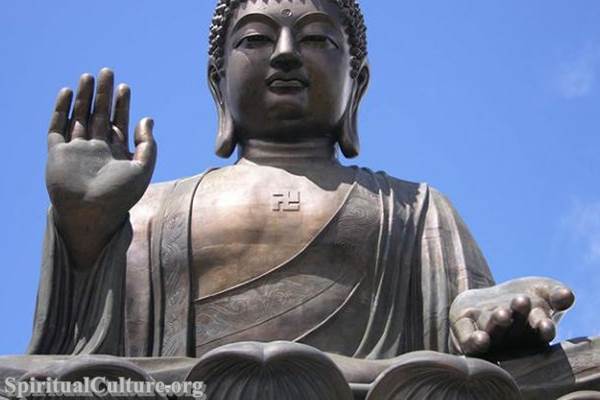In Buddhism, the symbol is known as a “manji” and is considered a powerful symbol of good fortune and prosperity. It is believed to bring good luck and protect against evil.
In Buddhist art, the manji symbol is often found on the feet of the Buddha statue, as well as on the chest, hands, and crown. It is also used as a decorative element in many forms of Buddhist art, including mandalas and thangkas. The symbol is also commonly used in Buddhist texts and manuscripts.

It’s worth noting that the Manji symbol predates the Nazi party and any association with them. The Nazis used the symbol as part of their party’s flag, which led to the symbol being associated with the Nazi party and anti-Semitism. However, this association is relatively recent, and the symbol has a much older and more complex history that predates the Nazi party.
In Buddhism, the Manji symbol is often used as a symbol of the Buddha’s teachings spreading in all four directions, as the arms of the symbol point in all four cardinal directions. It is also thought to represent existence’s eternal and cyclical nature, as the symbol rotates clockwise.
The Manji symbol is also commonly used as a symbol of the Dharmachakra, or “Wheel of the Dharma,” representing the Buddha’s teachings. The Dharmachakra is one of the Eight Auspicious Symbols in Buddhism, which is a group of symbols believed to bring good fortune and represent Buddhism’s spiritual path.

In addition, the Manji symbol is also used as a symbol of the Bodhi tree, under which the Buddha attained enlightenment. It’s also used as a symbol of the Buddha’s footprints and the footprint of the Dhyani Buddhas.
It’s worth noting that the use of the Manji symbol varies across different Buddhist traditions, and its meaning and significance may differ depending on the specific context in which it is used.




